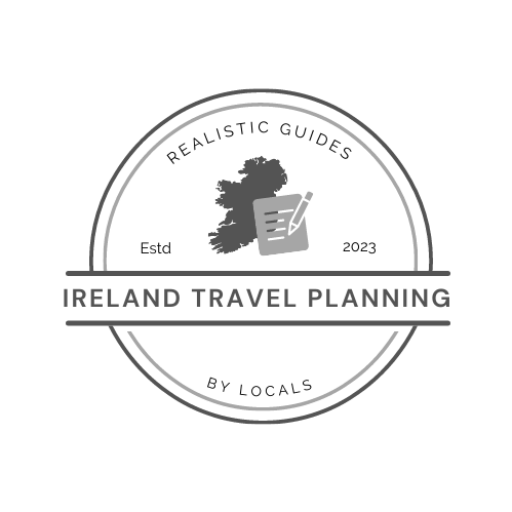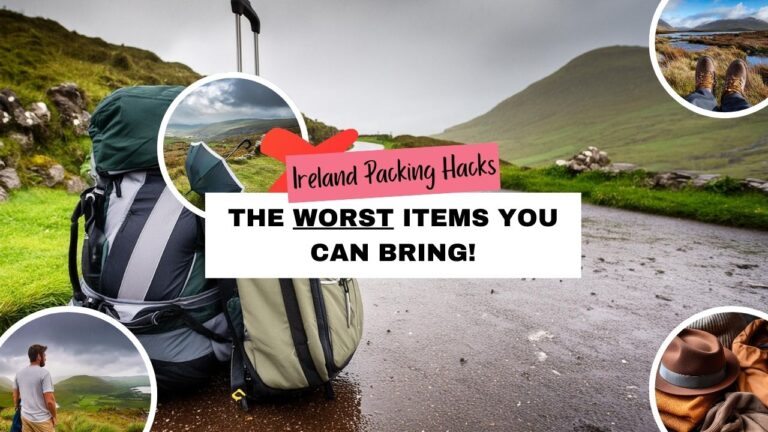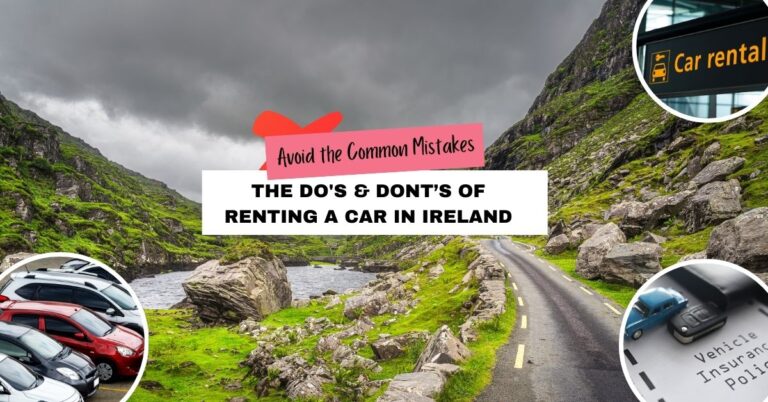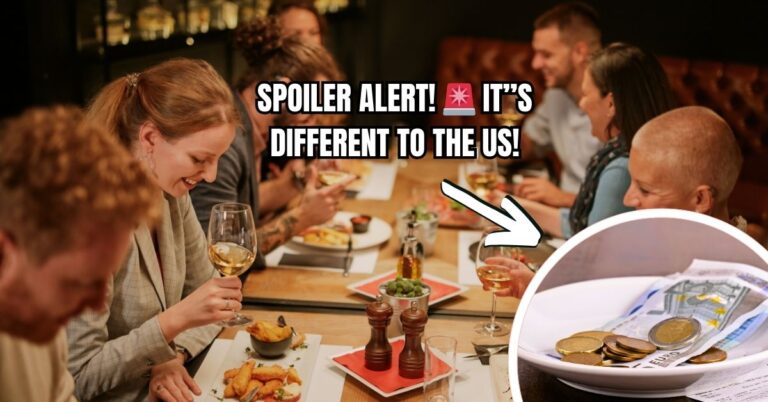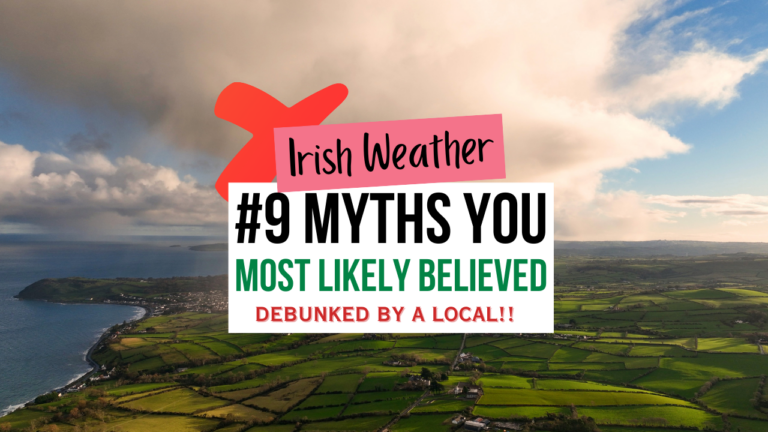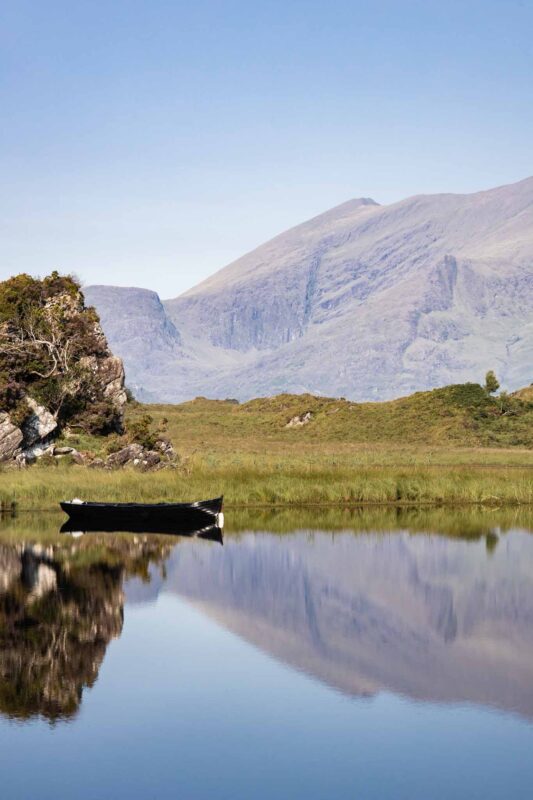41+ Ireland Travel Tips: Things you SHOULD NOT do on your first trip to Ireland!
Tips for Traveling to Ireland for the First Time – According to a Local
Ireland Travel Planning contains affiliate links and is a member of the Amazon Services LLC Associates Program. If you make a purchase using one of these links, I may receive compensation at no extra cost to you. See my Disclosure Policy for more information. Ireland Travel Planning also uses both personal and paid stock photos to illustate posts
The more I venture around the world, the more questions I am asked about Ireland. Ironic isn't it? But…If I am being honest, I don't mind it all too much. In fact, I really love talking about my home country. We as a nation hold our heads up high, we take pride in welcoming our visitors with open arms and are more than happy to show them around. We are determined for international travellers to experience true Ireland, with all its craic and mighty. And…today is no different, I want to create the ultimate Irish guide, answer all your questions and provide you with an insider guide to the top Ireland Travel Tips!
Before you visit Ireland, here's some quick recommendations…
📞 International roaming can be expensive, honestly eSims are the way to go! Airalo offers some pretty affordable cell phone plans that work seamlessly across Ireland, this one is best for travel within the Republic of Ireland and these deals work in both the Republic and Northern Ireland.
🏨 Hotel prices can go up and down, I always like to compare pricing by using site such as Booking.com or Hotels.com
🚌 Actives and Experiences is what makes an Ireland trip that extra bit special! Like did you know you can design your own Claddagh Ring? (one of my favourites). I typically find the best experiences by using the likes of GetYourGuide or Viator.
🚘 Renting a car is one of the best ways to explore the beauty of Ireland, but the pricing can be very competitive, that's why it is always best to check out site like Discover Cars to compare rental prices.
✈️ You never know what airlines may be offering Ireland flight deals, they can go down by 100's in a day, I always like to turn on price tracker on Skyscanner so I never miss a deal!
🏥 I can't stress this enough but travel insurance is an absolute must! Thankfully SafetyWing have some pretty affordable plans.
I have divided this post into easy-to-navigate sections, so you can skip down to the areas that most relate to you.
Ireland Travel Tips: The People, The Culture & The Craic
So, I want to kick start this guide with the main thing that makes Ireland so great, the people. There is no denying it, our mammies raised us far too well, the Irish are truly one of the politest nations you will ever meet. As mentioned above, we take pride in our helpfulness and would go out of our way to assist others. Below I will highlight some things you need to know before visiting Ireland, in relation to the people.

1. The Irish Language
When abroad, people often look at me with a puzzled expression when I mention the Irish language – but you speak English?
True, the vast majority of people in Ireland speak English, however, English is not our native tongue. Centuries ago, the main language spoken in Ireland was Gaeilge. Unfortunately, the Gaelic language was forced out during the British invasion. Which untimely led to most Irish people speaking English day to day. However, the Irish language is still taught in schools across the country, displayed on road signs and used in our everyday slang. There are also areas in Ireland that only speak Irish, these areas are known as the Gaeltacht.
One of the worse things to ask when an Irish person mentions that Irish language is: ‘Wait, is that just English with an accent?' 🤦♀️ I'm sad to say that I have lost count at how many times I have been asked this!
2. Familiarise Yourself with Some Irish Slang:
Another thing that we Irish pride ourselves in is our ability to have fun or a ‘good bit of craic' as we like to say. We don't tend to take ourselves all too seriously and enjoy nothing more than a ‘bit of banter'. Nonetheless, we do have the tendency to speak mostly with slang words and that doesn't change when tourists are about. It may be a good idea to familiarise yourself with some of the most common Irish slang before visiting Ireland. I'll list some of the most common ones below:
Craic: The term ‘craic' is an Irish word that directly translates to ‘fun'. Therefore, if an Irish person was to say ‘Ah sure, it was only a bit of craic', what they mean is ‘It was a lot of fun'.
Yer Wan or Yer Man: This is one that I am guilty of using all too often. ‘Yer Wan' refers to a woman in which you don't know the name of or don't want to use the name of and ‘Yer Man' is in reference to a man.
Example: ‘What is yer wan doing over there?' – meaning: What is the woman over there doing?
Grand: The term ‘grand' is possibly the most used word in the Irish vocabulary. We use it ALL THE TIME! If I am being honest, there is no true meaning to the word as it can be used in many different contexts, but I will give you a few conversations example down below.
Person 1: ‘Would you like a cup of tea?'
Person 2: ‘Ah no, I'm grand sure'
– Meaning: No, I don't want any tea.
Person 1: ‘How was the Movie?'
Person 2: ‘It was grand like'
– Meaning: The movie was ok, good but not great
Person 1: ‘How are you today?'
Person 2: ‘Ah yeah, I'm grand'
– Meaning: I'm feeling normal today, nothing unusual happening. It feels more than ok but less than great.
Person 1: What if it rains? The washing is on the line.
Person 2: ‘Sure look, it will be grand'
– Meaning: The clothes will get wet, but there is nothing we can do about it, so let's continue on with our day.
Basically, we just throw the word ‘grand' into a sentence anytime we feel like it. You will notice it from the moment you arrive in Ireland. Odds are the passport control officer will hand you back your passport saying ‘You're grand, off you go'. Which roughly means you have all the documents to enter the country, have fun. I know, all sounds a little crazy. But…it is one of the great things that makes us Irish.
Here is some slang that is easier to explain:
It's Baltic Outside: It's FRREEEEEZZZINNGGG outside(weather)
It's Roastin' Outside: It is HOT outside(weather)
Yoke: In relation to an object
This yoke is ‘Banjaxed‘: This thing is broken
Yer Man is ‘doin' my head in': That man is driving me crazy
The Place was ‘Jammers': Referring to when a place or venue is full of people.
You're Takin the piss: Are you messing with me?
You're Havin' a Laugh: Quite similar meaning to takin' the piss. Means to mess, tease or joke around.
My Mammy: My Mother, My Mum, My Mom
The list goes on! I would be here all day listing slang Irish words. However, it is important to mention. If you do not understand what an Irish person is saying. Do not be afraid to ask them to repeat themselves or explain. We are used to it and happy to do so.
3. The Irish use of Sarcasm
Sarcasm is most definitely used regularly by Irish people. As I mentioned above, we don't like to take ourselves or life all too seriously. We are also masterminds when it comes to stretching the truth.
It is important not to get offended on your first visit to Ireland if an Irish person reply's to you with a sarcastic comment or remark. Odds are that it just means that they like you and are comfortable in your company. In fact, most Irish people will answer a question in a sarcastic tone or manner without even realising it. It's just our way of life.
For example, if you ask an Irish person to do something or help you with something and they reply with ‘I will, yeah'. That is a sarcastic way of saying no, in reality, they have no intention of moving from their current position. Now, don't get me wrong, nine times out of ten an Irish person is more than happy to help. But…just don't be surprised if you get a sarcastic response instead.
Need with your Ireland trip? Let me be your guide…
🙋♀️ Travel Consultation
Book a 40 minute Ireland Travel Planning call with Laura your local guide to discuss some insider tips for your Ireland vacation!
🇮🇪 Free Resources
Explore my free resources packed with insider tips and expert knowledge to help you plan your trip to Ireland!
😘 Say Thank You
Finding my content helpful? A small tip would mean the world to me. It helps me to continue making these free guides 💛
Or, Join my FREE Ireland Travel Planning Facebook Group to ask questions about your upcoming trip! I pop in once a week to answer as manny as possible 🇮🇪
Need with your Ireland trip? Let me be your guide…
🙋♀️ Travel Consultation: Book a 40 minute Ireland Travel Planning call with Laura your local guide to discuss some insider tips for your Ireland vacation!
🇮🇪 Free Resources: Explore my free resources packed with insider tips and expert knowledge to help you plan your trip to Ireland!
😘 Say Thank You: Finding my content helpful? A small tip would mean the world to me. It helps me to continue making these free guides 💛
ℹ️ Join my FREE Ireland Travel Planning Facebook Group to ask questions about your upcoming trip! I pop in once a week to answer as manny as possible 🇮🇪
4. Our Ability to Stretch the Truth
Another thing to note on your first trip to Ireland is the Irish uncanny ability to stretch the truth. Here's an example, while giving directions if an Irish person says ‘yeah, sure it is only down the road' that could mean that the destination is anywhere from a 5-minute walk to a 45-minute walk. Either way, to an Irish person that is only down the road. Or, if an Irish person says ‘sure, we will just go for one' when deciding if they are going to go to the pub ‘one' never really means ‘one'. It can either translate to ‘two or three' or you'll be dancing the night away until the early hours of the morning. There is really no in-between. So, the moral of the story is to never take an Irish literally.
5. Understanding Irish Accents and the Counties of Ireland
Ok, another thing worth noting before setting off on your Irish adventure is our accents. For such a small nation we sure as hell have many different accents and dialects. For starters, each county in Ireland (and there are 32), has their own ‘slang words' and ‘sounds'. At times, it even gets confusing for Irish people from different parts of the country to understand each other. I guess, what I am trying to say, is if you don't understand what someone is saying, don't be afraid to ask them to repeat themselves. Trust me, we are well used to it. Sometimes we just need a gentle reminder to talk a little slower.
To expand on that note, there is a little bit of friendly rivalry that goes on between each county in Ireland. This is mostly due to our competitiveness when playing our national sports. Nonetheless, it is common to hear say a person from county Dublin and a person from county Kerry share a bit of banter over who has the better county. Clearly, the Dubs are the winners in this scenario 😉
Ireland Travel Tips Video Guide
Tips for Visiting Ireland for the First Time: Social Customs and Expectations
Ok, so there are some things Irish people expect to see, and some things we expect people to do. And…I would like to dedicate this section to talking about them.
6. Use your Manners
Once you arrive in Ireland it is super important to remember your manners. This is something that is very important to the Irish people. We never go anywhere without remembering our please and thank yous. And…if we come across someone who doesn't behave politely or mannerly we are less likely to go out of our way to help them. A simple thanks goes a long way.
7. Hold the Door Open for Those Behind You
In most public areas Ireland still has swingy-style doors. It is expected of the person who first goes through the door to look behind them to see if anyone is following them. If so, they should either hold the door open for them or let it go gently into their hands. Letting a door slam behind you doesn't swing in Ireland. – sorry, excuse the pun I just had to.
8. Hanging Up the Phone
If you do happen to ring someone on the phone while visiting Ireland. Even if it is a restaurant to make a reservation, a tour company to book a tour or just for general chit-chat. It is important to always say goodbye. This is something I didn't know was an ‘Irish Thing' until I lived abroad for a few months. Irish have the tendency to say goodbye more than once when on the phone. It is common for our conversations to end something like this ‘bye, bye,b,b,b, bye'. I promise I'm not even joking. You, of course, don't have to say bye 7 million times like an Irish person, just be sure to officially end the conversation before hanging up.

9. Hiking and Walking on the Street
When hiking in the mountains it is common to give a person passing you by a friendly, wave, nod or smile and a quick hello. This can also happen when walking in the street. It is not so common in the cities but certainly in more rural and suburban areas. In Ireland, if you make eye contact with a stranger it is polite to engage with them in some way, even with a gentle smile.
10. Tipping Culture:
I get this question quite often, is it required to tip in Ireland? To answer the question quickly, no. It is not a requirement to tip in Ireland. In other words, you don't have to but it is certainly appreciated. Now, the Irish wouldn't go tipping 20% of the bill but it is common to round the bill up to the nearest 5 or 10 or leave 10%. I personally always tip, particularly, in restaurants, when getting a taxi or say getting my hair done. It is just a nice way of saying thank you for the service.
11. If an Irish person says no they don't always mean no
HUH?! I know, does that sound confusing? Well, that's because it is. We Irish are raised to be so polite that the first time we are asked do we want something, we almost always automatically say no. It is polite to decline on the first offer. This…however…does not mean we don't want the thing that is on offer…it just means that we don't want to come across as greedy or expecting. So, the moral of this story is to always ask an Irish person do they want something more than once.
Person 1: ‘Will I buy you a drink?'
Irish Person: ‘Nah, I'm grand thanks'
Person 1: ‘Are you sure?'
Irish person: ‘Nah, honestly I'm good'
Person 1: Are you sure last offer
Irish Person: ‘Oh, yeah, go on, I'll have one'
The above example is how the conversation normally goes. I know, what can I say, we are one confusing bunch. This is something I struggle with big time when abroad because I have to say yes straight away if I want something 🤣
12. How to Greet Someone in Ireland
Ok, so we Irish stray a little bit away from the typical European greetings, like kissing on the cheek or a hug. If we don't know someone, we are far more likely to either shake their hand or give them a gentle wave before introducing ourselves. We save hugging for our close friends and family.
13. Swearing and Curse Words
The use of swear and curse words in Ireland is definitely more tolerated in day-to-day life than in other cultures. It's just not really something we frown upon. We also have some curse substitutes that are a lot lighter on the tongue like ‘feck' and ‘shite'. Now, don't get me wrong, it is impolite to curse in front of your parents or someone older than you.
Planning a Trip to Ireland: Money, Cards & Paying for Things
In this section of our Ireland Travel Guide, I want to talk to you about paying for things while visiting Ireland. We will address, currency, cash, card payments & ATM's.

14. What currency is used in Ireland?
In the Republic of Ireland, we use the Euro and in the North of Ireland, the British Pound is used. It is quite common for shops positioned near or on the border to accept both currencies but gives change back in the respective currency. For those of you using a card, I would suggest requesting to pay in the currency of the area you are in, that way you will avail of the best exchange rate.
15. Should I bring cash with me to Ireland?
Cash is not 100% needed, as there are card machines readily available on the Island. However, if you plan on using toll bridges, tipping or visiting market-style shops then it is also a good idea to have a small bit of cash just in case.
16. How do card payments work in Ireland?
Card payments in Ireland actually work quite differently from the likes of the United States. The person taking the payment is not supposed to handle your card at all, it's down to consumer rights. Therefore, swipe payments rarely happen, unless there is an issue with the payment, in that case, the card owner needs to sign the receipt once the purchase is made. Ireland uses the chip and pin service, meaning, the person making the purchase will pop their card into the card machine and then enter their pin. Contactless payments are also extremely common, these can be done using the tap of your card or mobile device. It is important to note that American Express is not widely accepted in Ireland, I'd advise bringing an alternative payment method.
17. Is it easy to Withdraw Cash in Ireland?
Yes, you can commonly find ATM machines in local newsagents, shopping centres and banks. It is easy to withdraw cash from them, just be mindful, that a pin is needed. Also, charges may apply. It is also possible in some stores to receive cashback when purchasing items on a card. Just ask the cashier if their store avails of this service. This is usually the case in large grocery stores and some department stores.
18. Do I Need a Currency Card?
This comes down to personal preference. If your bank charges large rates to withdraw or make purchases in a foreign currency then a currency card may be beneficial to you. I personally, would have been lost without my Revolut pay-as-you-go card. It is a great way of staying on top of what you are spending and it is easy to change in and out of currencies.
What to Know Before Visiting Ireland: Transportation & Getting Around Without a Car
This section of the post will deal with the best way of getting around Ireland when you don't have a car.
19. Transportation in Dublin
Dublin is Ireland's capital city, meaning a lot of tourists pass through the capital to get to various other locations on the Island. Dublin has many public transportation units for those who are planning on spending a few days in the capital. These include the Luas, bus and DART. Tickets to all public transport services can be purchased using a leap card, so consider purchasing a visitors leap card if you plan on spend more than one day in Dublin.
20. Transportation Throughout the country
The leap card can also be used in various other cities around Ireland, including Cork, Galway, Limerick and Waterford.
Train Travel in Ireland: Ireland's Train system is very well put together, it will easily get to and from all the main areas. However, if you are looking to experience a little more off-the-beaten-path places or scenic places for that matter, it is best to rent a car or book a tour.
21. Book a day tour
It is quite common for tourists to book tours in order to see some of Ireland's highlights such as the Cliffs of Moher, the Giants Causeway or Wicklow National Park. This is a great way to see more of Ireland when you are stuck for time and plan on basing yourself in just one place.
Dublin is a great place to base yourself for day trips around the country. I'll list below some of the most popular tours from Dublin.
- Tour of Wicklow & Kilkenny from Dublin
- Tour of Cliffs of Moher, the Burren & Galway from Dublin
- A Trip up to the Giants Causeway & Carrick a Rede Rope Bridge from Dublin
- Glendalough Half Day Tour from Dublin
- Newgrange, Knowth Hill and Slane Tour from Dublin
Going to Ireland for the First Time: Driving in Ireland
Driving in Ireland can be a scary thought for most tourists. Considering a high majority of the world drives on the opposite side of the world compared to Ireland. If you happen to be from a country that drives on the left-hand side, then driving in Ireland will be no bother to you.
22. Driving on the left-hand side of the road, is it really that scary?
It would be completely inappropriate for me to answer this question, considering I learned to drive on the left. But…if it helps at all, I have driven in countries that drive on the right and didn't find it all too hard. For the first hour or so, you will need to be very conscious of your positioning but it will become like second nature once you get used to it. Of course, it is always important to drive with care and awareness.

23. Self Drive Road Trips are the BEST!
So, as I mentioned previously if you are hoping to base yourself in Dublin. Then you will more than likely not need a car to get around as there are many day trip options that leave from the city. HOWEVER, by renting a car you have the option to make your own Ireland Itinerary.
You could spend the week checking out some of the country's most beautiful cliffs. Or, pack your bags to explore the beauty of County Kerry.
Maybe you are hoping to explore some of the country's hidden gems, like Achill Island in County Mayo, home to Ireland's highest Sea Cliffs. Or, Inis Mór in County Galway.
No matter what you decide, renting your own car gives you complete freedom to explore the Emerald Isle at your own pace.
24. Does Ireland have automatic cars?
Yes, Ireland does have automatic cars, although manual cars are far more common. If you plan on renting an automatic car, just be mindful that this will come at an extra charge.
25. Does Ireland have many toll boots?
Yes, if you are going on an Irish road trip, it will be near impossible to drive without coming across a toll bridge, or several for that matter. Most will allow you to pay with coins, however, there are the likes of the M50 toll in Dublin that you may not even notice you have passed. The payment is taken by reading the cars reg plate.
If you don't have an e-toll payment tag you will need to visit the nearest petrol/gas station to pay the toll/or go online. Most rental companies will offer an e-toll tag for an extra charge, I'd recommend opting into this, that way you don't need to worry about finding change for the toll bridges or have to go out of your way to make payments. It also lets you sail through the toll bridge without having to queue.
26. Are Irish Road Signs in Irish?
So, I mentioned above that the Irish road signs are in Irish, however, there is no need to worry because they are also in English. Making it easy for most tourists, and Irish people for that matter to get around.
27. How is the Irish speed limit measured?
In the Republic of Ireland, the speed limit is measured using kilometres per hour. In the North of Ireland, the speed limit is measured in miles per hour.
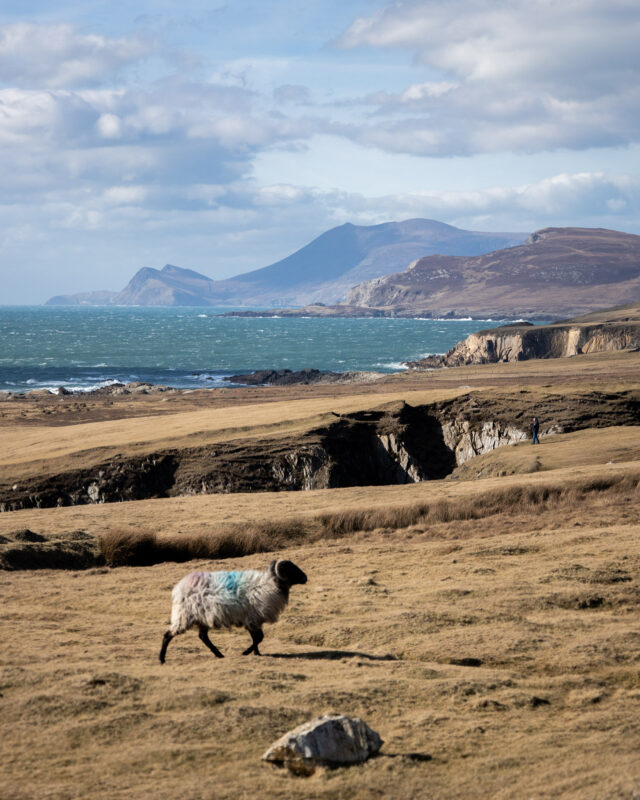
28. Crossing the border into Northern Ireland?
Ok, so many of those who decide to rent a car may be worried about crossing the border from the Republic of Ireland into Northern Ireland. To be honest, this is a super easy process, in fact, you may not even notice that you have crossed the border. The only form of indication may be the speed limit will have changed from kilometres to miles and that the road signs are no longer in Irish.
*It is mindful to note that when renting a car there may be an additional fee for those who intend on driving up to the North. I assure you this fee is totally worth it because there are some amazing things to do there*
28 . Driving on rural roads in Ireland, are they dangerous?
If you do decide to rent a car for your trip to Ireland, Odds are you are going to end up driving on rural or country roads. This can be a little daunting to most of us, including me, due to the high-speed limits on these roads. My best advice is to take your time, it is better to arrive at a destination late than not arrive at all. Some rural roads will have a speed limit of 100 kilometres an hour, yet, I still drive at no more than 60 kilometres on them. If a car comes behind you that is travelling at a faster speed there is usually always room for you to pull in to the left and let them pass. If not, it's important not to worry about it and carry on driving safely.
29. Are there any rules on Irish motorways/highways that I should be aware of?
Yes, on Irish motorways one should drive in the left lane at all times. The lanes to the right are purely meant for overtaking. In saying that, these rules are not always obeyed by others, but it is important for you to know and follow the rules. Those who don't are putting themselves and others at risk.
Ireland Travel Tips: Packing, Weather & The Best Time to Visit
Ok, so this is possibly the thing you wanted to know the most when looking up tips for visiting Ireland.
Like seriously, what is up with the Irish weather!? And…why on earth is it so unpredictable?
This is something I honestly ask myself every day, and I guess it is just something I have learnt to live with. Like you hear the word…Island…and you think tropical beaches, palm trees and exotic animals…well let me tell ya, Ireland certainly does not live up to that stereotype.
No, but seriously…with all jokes aside. Ireland truly is one of the most beautiful countries in the world. And that is by taking our not-so-island-like weather into consideration.
30. So, what is Ireland's weather really like? How do I prepare? What do I pack for my trip to Ireland?
To tell you the truth, there is no one way to truly prepare yourself for the Irish weather. It is common for us the experience 4 seasons in one day. Yes, that is right…one minute it is sunny…the next it's raining…and hell we may even experience a bit of snow and thunder in between. All I can say is bring some rain gear…you will at some point need it! Also, check out my detailed packing guide for Ireland. I promise I joke a lot less about it. Below are some of the must-haves in your suitcase for a trip to Ireland.
- Rain Coat
- Waterproof Trousers
- Hiking boots or Waterproof Shoes
- Sunglasses
- Cap or Beanie (depending on the time of year you visit)
- Suncream
- A Wind Proof Umbrella (not a must but super handy)
- A Travel Adapter
- A Camera (Can even be your phone but just bring something to take pictures)
I know, I know, that list is so diverse…one minute you need a rain jacket…and then the next you need sunglasses? But, I promise that is what Ireland is like and you will regret not bringing them.
31. When is the best time to visit Ireland?
This is a difficult question to answer, you may want to visit at different times of the year for different reasons.
For example, mid March is a great time to visit, due to the weather being good and well, Saint Patrick's day…but it is expensive.
In June, Ireland hold's its end of year state exams, known as the leaving cert. It is a common joke among us Irish that June is the month of the leaving cert weather. This basically means we predict, that June will be almost a guaranteed month of sun. Of course, this nearly always ends up being a coincidence. However, if you are looking to visit Ireland when it's sunny June may just be your best bet!
Now if you can't make it in June but are still hoping for a bit of sun, then maybe consider September. The temperatures are a little lower but you will still see more sun in September than throughout the rest of the year(hopefully). And…Ready for another coincidence? Ironically, the kids in Ireland go back to school in September. Our weather seems to shape itself around the school holidays…Weird ?
Another great time of year to visit Ireland is the end of October through to the start of November, the leaves have started to fall off the trees and it is the official week of Halloween. A holiday that originally started in Ireland. Besides, who doesn't want to see the national parks all dressed up in Autumn colours? Just be mindful that October and November are cold months so wrap up warm.
Christmas can also be a great time to visit Ireland. See the city's dressed up in sparkling lights, visit some charming Christmas markets and well… ring in the New Year Irish Style.
No matter what time of year you decide to visit Ireland. I have no doubt that you will have an amazing time.
32. Ireland Tips: The North & South of Ireland – Crossing the Border
Ok, so a lot of people who visit Ireland find themselves curious about the difference between The Republic of Ireland and Northern Ireland. If I am being honest, I don't blame them, It is certainly an interesting topic. However, this can be a controversial question to many so maybe it's best to leave questions like this to the likes of tour guides. They will be more prepared to answer all of your questions and will be half expecting them. Below I will try to explain the difference between both to the best of my ability without being too biased.
Officially, The Republic of Ireland and Northern Ireland are two different countries, that share the same island. However, most people from the Republic of Ireland and a percentage of people from the North of Ireland see the whole island as Ireland and would, therefore, identify as Irish. The other percentage of people living in Northern Ireland see the North as part of Britain and would identify as British. However, no matter if we identify as Irish or British, I think we can all collectively agree that we live on one pretty island with endless possibilities to go exploring.
The Republic of Ireland is an independent country that is part of the EU, whereas Northern Ireland is part of the United Kingdom. Therefore, laws and regulations in both countries are different.
As far as the border goes, there is no physical border, you don't need to go through passport control nor get your car checked. You are free to travel to and from the Republic of Ireland to Northern Ireland. As far as Visa goes, I am not 100% sure if a visa will be needed in the future with Brexit, it is, therefore, important to check the rights of individual country's entry before crossing the border.
Things to Know Before Going to Ireland: Food Glorious Food
Ok, next I thought it would be fun to talk about Irish food. but…instead of posting an endless supply of my favourite restaurants, I thought I may be fun to put a bit of a local's spin on it. I am going to list some the ‘typical foods' eaten by local Irish people…aka weird traditions, food combinations and junk food that we Irish can not get enough of. If you want to have a true Irish experience when in Ireland then you must try at least one of these foods. No matter how weird and unusual they sound.
33. A Tayto Sambo
Ok, so this may sound completely bazaar to those from different countries…but a tayto sambo…Is two slices of white bread…Kerry gold butter…and a packed of tayto crisps.
It is important to squish the sandwich together once it is made in order to get the full effect.
Also, the brands are super important…it HAS to be Kerry Gold Butter and it HAS to be Tayto Crisp (of course this is my own personal opinion but I think most Irish would agree).
And…If you can get your hands on Breenans Bread I would advise that you do so.
All of the above can be found in Supermarkets and Newsagents across Ireland.
34. A Spice Bag
Spice bags took Ireland by storm about 2 years ago. They just suddenly popped up and quickly became everyone's favourite hangover cure.
Spice bags can be bought in most fish and chip shops…aka Chippers as we Irish like to call them and some Chinese takeaways.
They are basically chips with crispy chicken mixed up in a bag with different vegetables and species.
Once again sounds so weird but soo nice.
35. Deli Food
Deli food is huge in Ireland. In fact, I am yet to see anything like Irish Deli anywhere else in the world.
An Irish Deli is basically a food counter in supermarkets and larger newsagents where customers can get freshly made-to-order rolls, wraps and sandwiches.
The toppings and ingredients can either be made up of hot finger style food or cold salade bar food…or a combination of both.
Popular things to get from the deli include a chicken fillet roll, basically a roll with either mayonnaise or butter with a crispy chicken fillet and toppings of your choice.
A Breakfast Roll… is basically everything that you would typically get in an Irish breakfast put into a roll.
And a wedge roll…which is basically a roll combined with potato wedges and of course butter. We Irish love our butter. Oh…and potatoes.
36. Chipper
Ireland is known for its fish and chip shops. And I am told by many of my international friends who have come to visit that they are the best! So, pick yourself up some typical Irish chips.
Just curious, have you noticed a theme that keeps recurring in this section of the post? The Irish love the combination of potatoes and bread…a crisps sandwich…a wedge sandwich…and yes, you guessed it…a chipper sandwich. It is common for Irish people to bring home their chips bought in the chipper and combine them with a slice of bread, a bit of butter and some ketchup(well, I personally use ketchup, I know that can be a bit controversial).
37. A Carvery
Going out for a bit of Carvery is about as Irish as it gets.
A Carvery is a combination of the roast of the day which can either be, ham, roast beef or turkey, vegetables, stuffing and gravy.
It is Delish and one of my favourite dinners in the world.
Carveries are typically served in pubs, particularly on Sunday's but some pubs do them all week long. They are usually served deli-style so to speak. The chef will stand behind the deli-style unit and you will tell them what roast you would like, what veg you would like and if you want gravy.
General Tips for Visiting Ireland
Ok, so we are coming to the end of our ultimate Ireland Travel tips Guide for first-timers. There are a few more final tips that I want to address before we go.
38. Budget:
Ok, so this is a hard one to address, but Ireland is by no means a cheap country to travel to. The only way I can recommend keeping the costs down is by staying in hostels or maybe considering camping. However, there are a lot of free things to do like hiking, visiting coastal towns or exploring to free things to do in a city…take Dublin for example.
39. Phone Service
I would highly recommend ensuring your phone is unlocked before you arrive that way you can get a local sim(should be free) and research the best pay-as-you-go deals on offer a day or two before you arrive. The most popular phone companies include 3, Vodafone and Eir. It is common to find deals for 20 euros that offer 10GB of data and a high volume of calls and texts.
40. Don't Only Visit Dublin
I urge you to try to see as much of the rest of the country as possible. I hear people say it time and time again, ‘I didn't visit outside Dublin'. Don't get me wrong Dublin is great craic and a lot of fun and there is plenty of attractions in Dublin to keep you busy for a day or two. But there is so much more to see and do in Ireland. If you are only here for a short number of day's try to go on at least a day trip from Dublin to see some of Ireland's fantastic nature spots. I promise you will not forget it!
Related Post: 2 Days in Dublin Itinerary
41. Electricity
I just wanted to mention again that it is important to bring an adapter as Ireland uses 230 V voltage.
42 Safety
I also wanted to address the level of safety in Ireland. Ireland is a relatively safe country, but like everywhere it is important to keep your wits about you. Try to make the smartest choice and if you are travelling solo always tell someone at home where you are going and when you plan on being back in your accommodation. This also applies when staying safe in Dublin, always tell someone where you are going to be and don't go out at night alone.
Have a Ireland Travel Question?
Then join my FREE Facebook Community, I pop in once a week to answer as many queries as possible. Please do not email or DM. It is easier for me to manage everything in the one place 😊
👋 JOIN MY FREE IRELAND FACEBOOK COMMUNITY
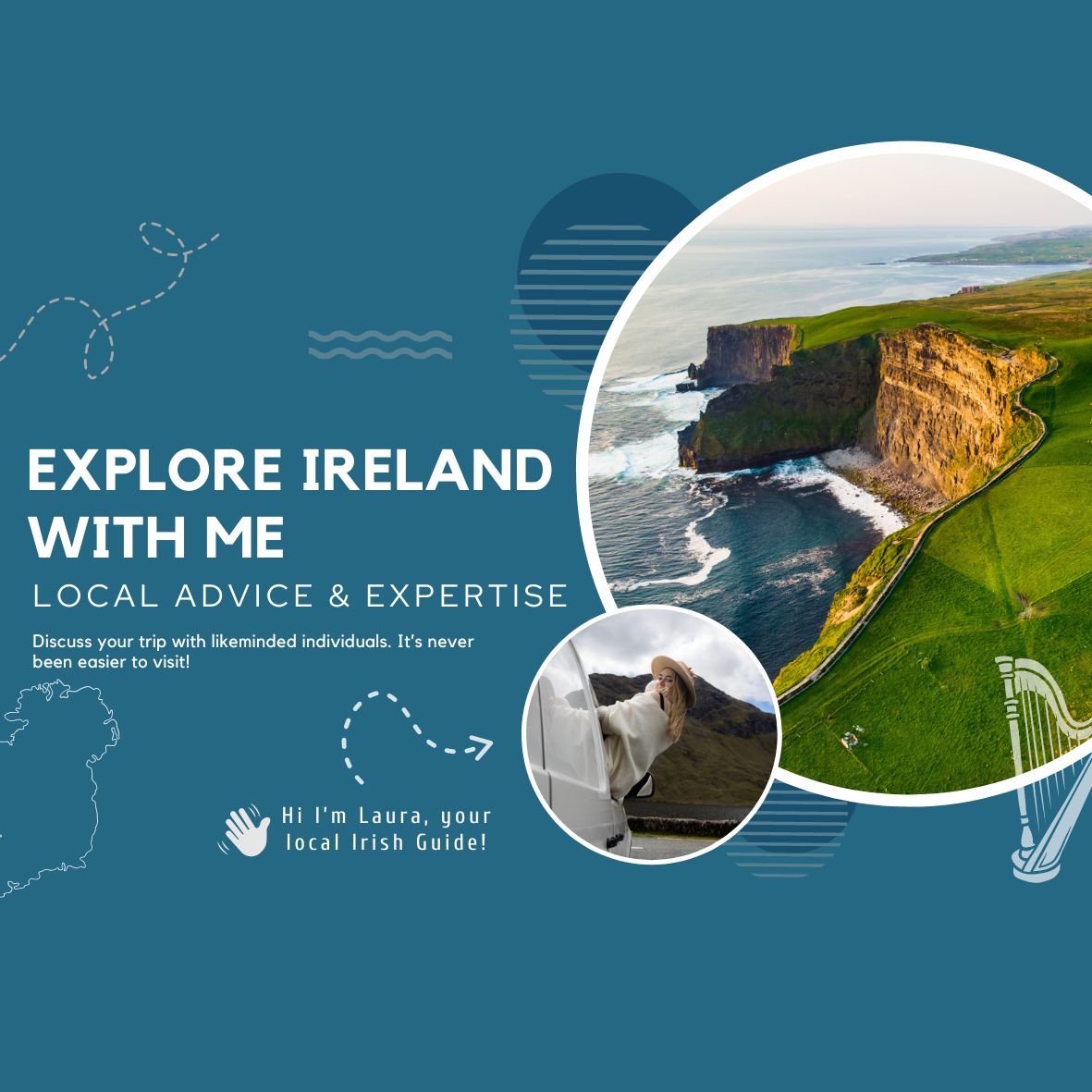
🇮🇪🇮🇪🇮🇪
FREE IRELAND FACEBOOK COMMUNITY
✔️ LOCAL ADVICE
✔️ FREE ACCESS TO GOOGLE MAPS PINS
✔️ GROUP DISCUSSION
Disclaimer: Please note that some blog posts on LiveAdventureTravel may contain affiliate links meaning that I may make some commission on purchases made through said links at no extra cost to you.
